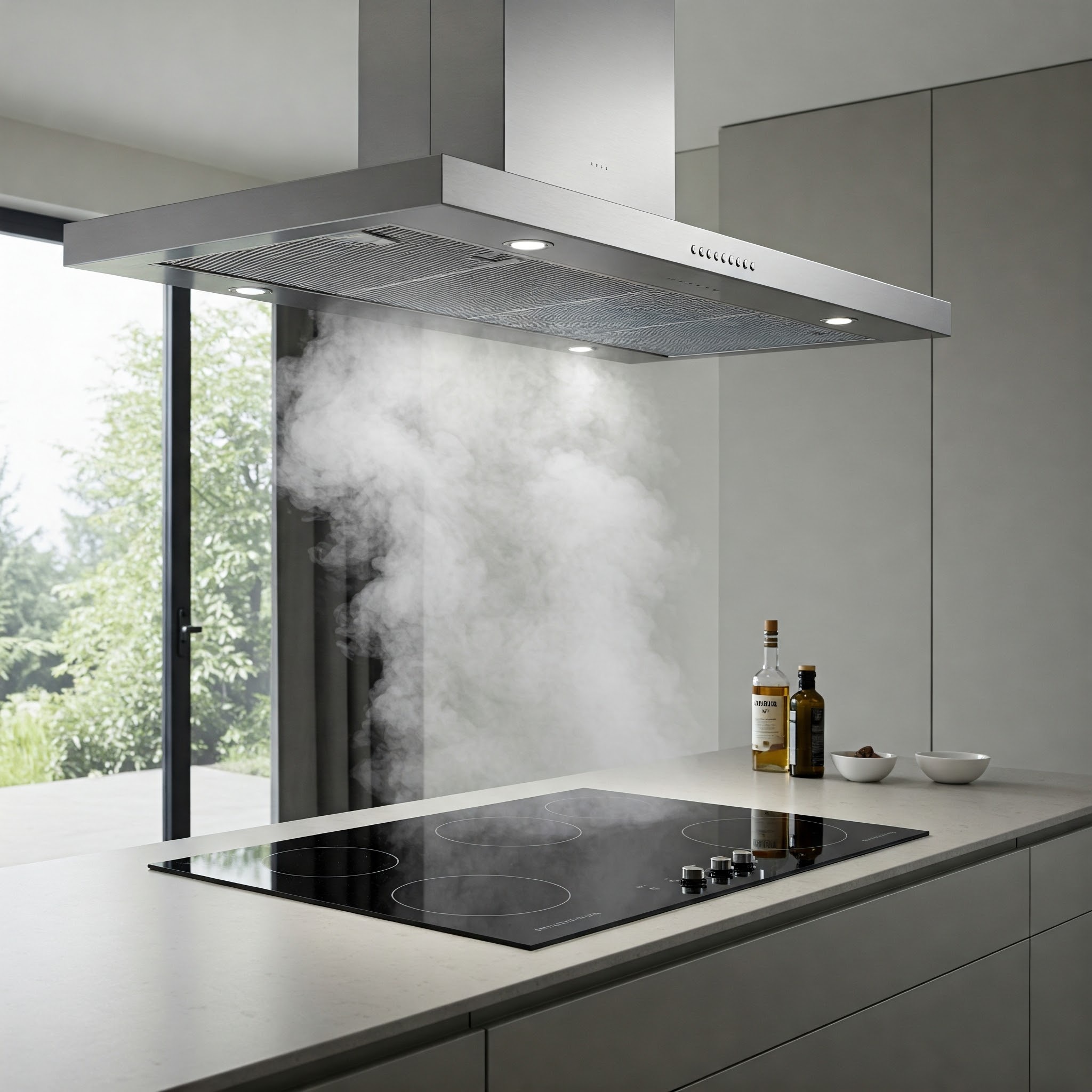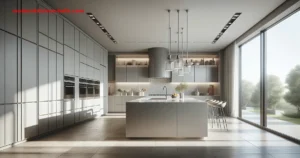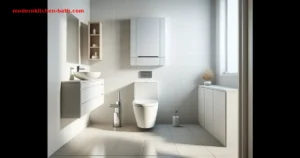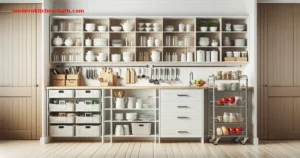The kitchen is often the heart of the home, but cooking activities – searing, frying, boiling, roasting – inevitably generate heat, steam, smoke, grease particles, and odors. Without proper ventilation, these airborne elements can linger, reducing indoor air quality, creating unpleasant smells, leaving greasy films on surfaces, and even damaging cabinetry over time. An effective kitchen ventilation system is therefore not a luxury, but an essential component of a healthy, clean, and comfortable kitchen. This guide explores the importance of kitchen ventilation, the main types of systems available, and the key factors to consider when choosing the right one for your home.
Why is Kitchen Ventilation Essential?
Investing in a good ventilation system provides numerous benefits:
- Removes Smoke, Steam, and Excess Heat: Makes cooking more comfortable and prevents smoke alarms from being unnecessarily triggered. Reduces humidity levels.
- Captures Airborne Grease: Filters out grease particles before they settle on cabinets, walls, and ceilings, making cleaning much easier.
- Eliminates Cooking Odors: Prevents smells from cooking (like fish or strong spices) from lingering and spreading throughout the home.
- Improves Indoor Air Quality: Vents harmful pollutants, especially from gas cooking (like carbon monoxide and nitrogen dioxide), to the outside (with ducted systems). Even electric cooking produces particulate matter.
- Protects Cabinets and Finishes: Reduces exposure to grease and moisture that can damage wood, paint, and other surfaces over time.
- Increases Comfort: Creates a more pleasant environment for cooking and gathering.
Main Types of Kitchen Ventilation Systems
The most common systems are designed to capture contaminants directly at the source – the cooktop or range.
1. Range Hoods (Cooker Hoods)
Installed directly above the cooking surface, range hoods are generally the most effective type. They come in two main functional categories:
- Ducted (Vented) Range Hoods:
- How they work: A fan captures cooking fumes, pulls the air through grease filters (mesh or baffle type), and then expels the captured air, including heat, moisture, odors, and pollutants, outside the home via a system of ducts.
- Pros: Most effective method for removing all types of contaminants from the kitchen air. Improves indoor air quality significantly.
- Cons: Requires installation of ductwork running to an exterior wall or the roof, which can be complex, costly, or sometimes impossible depending on kitchen location and home construction (e.g., apartments, interior kitchen walls).
- Ductless (Recirculating / Non-Vented) Range Hoods:
- How they work: A fan captures cooking fumes and pulls the air through grease filters (mesh or baffle). The air then passes through charcoal filters (or carbon filters) designed to trap odors and some smoke particles. Finally, the filtered air is released back into the kitchen.
- Pros: Much easier and cheaper to install as no ductwork is needed. Can be installed almost anywhere.
- Cons: Significantly less effective than ducted hoods. Does not remove heat, moisture, or combustion byproducts. Relies heavily on charcoal filters for odor control, which need frequent replacement (every 3-6 months typically) and add ongoing cost. Can sometimes be noisier for the perceived airflow.
Common Range Hood Styles:
- Under-Cabinet: Mounts underneath an upper cabinet; compact and common.
- Wall-Mount Chimney: Mounts on the wall above the range, with a visible chimney extending upwards. Often a design statement.
- Island Canopy: Designed to be mounted to the ceiling above a kitchen island cooktop. Requires ceiling ducting (if vented).
- Hood Inserts/Liners: The functional components (fan, filters, lights) designed to be built into custom cabinetry or decorative hood surrounds.
- Downdraft Hoods: Some hoods incorporate a downdraft function (see below).
2. Downdraft Ventilation Systems
- How they work: These systems are typically integrated directly into the cooktop surface or installed as a separate unit that pops up from behind the cooktop when needed. They pull cooking fumes downwards or backwards into ducting (if vented) or through filters (if ductless).
- Pros: Offers a minimalist aesthetic as it retracts out of sight when not in use. A solution for kitchen islands or locations where an overhead hood is architecturally difficult or undesirable.
- Cons: Generally considered less effective than overhead range hoods because they must fight the natural upward movement of heat and steam. Can struggle to capture fumes effectively, especially from taller pots or front burners. Installation can be complex, requiring space below the cooktop.
3. Other Ventilation Methods
- Over-the-Range (OTR) Microwaves: These combine a microwave oven with a built-in ventilation fan underneath. While space-saving, their ventilation performance (especially when ductless/recirculating) is often weak compared to dedicated range hoods.
- Window/Wall Exhaust Fans: Basic fans mounted in a window or wall can help air out a kitchen but are not effective at capturing contaminants directly at the cooking source.
Key Factors When Choosing a Ventilation System
- Ducted vs. Ductless: This is the primary decision. Ducted ventilation is always preferred for superior performance if installation is feasible. Choose ductless only when ducting is impossible.
- Airflow Capacity (CFM): Measured in Cubic Feet per Minute, this indicates how much air the fan can move. Higher CFM is needed for larger kitchens, high-output gas ranges, longer duct runs, or frequent high-heat/greasy cooking.
- General Guidelines (Consult Professionals/Local Codes): Minimum 100 CFM per 10,000 BTU of gas cooktop output, OR approx. 100 CFM per linear foot of electric cooktop width. Over-simplification; duct size/length/bends greatly impact needed CFM.
- Capture Area (Size & Depth): The hood should be at least as wide as the cooking surface below it and deep enough to cover the front burners effectively.
- Noise Level (Sones): Sones measure sound level; lower numbers are quieter. Look for hoods with variable speed fans offering lower sone ratings at lower speeds for quieter operation during light cooking.
- Filter Type:
- Grease Filters: Baffle filters (stainless steel) are generally more durable, effective, and easier to clean (dishwasher-safe) than mesh filters (aluminum, can degrade over time).
- Charcoal Filters: Essential only for ductless/recirculating hoods. They trap odors and need regular replacement (check manufacturer recommendations). Their effectiveness diminishes over time.
- Style and Aesthetics: Choose a hood or system that complements your kitchen’s design (stainless steel, glass, custom panel-ready inserts, etc.).
- Lighting: Most hoods include built-in lighting. Check the type (LED preferred), brightness, and coverage over the cooktop.
- Controls: Consider ease of use – push buttons, touch controls, remote controls, variable speed settings.
- Budget: Prices range widely from basic ductless hoods to high-CFM professional-style vented hoods or downdraft systems. Factor in installation costs.
Maintenance is Key
Regardless of the system, regular maintenance ensures optimal performance. Clean grease filters frequently (monthly or as needed) and replace charcoal filters in ductless systems as recommended by the manufacturer.
Conclusion
An effective kitchen ventilation system is a crucial investment for maintaining good indoor air quality, protecting your kitchen surfaces, and ensuring a comfortable cooking environment. While various options exist, ducted range hoods offer superior performance by completely removing grease, smoke, heat, moisture, and pollutants from your home. Downdraft systems provide an alternative aesthetic but are generally less effective. When choosing, carefully consider the ducted vs. ductless feasibility, calculate the appropriate CFM needed for your cooktop and kitchen size, evaluate noise levels and filter types, and select a style that complements your design. Proper selection and installation will make a significant difference in the air quality and longevity of your kitchen.







Leave a Comment